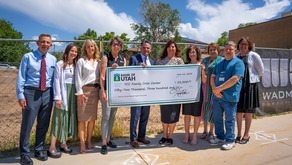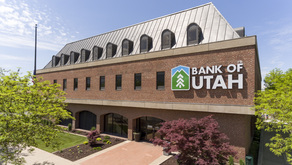In 2018, the Governor’s Office of Economic Development (GOED) with the Utah Department of Workforce Services (DWS), announced new "Opportunity Zones" from the U.S. Treasury Department.
Video Source: Forbes
The goal of this initiative is to drive economic prosperity by attracting more businesses and new investments in targeted economically distressed rural and urban communities throughout the state. According to the ABA Banking Journal, the Opportunity Zones initiative targets more than 8,700 communities in 50 states, the District of Columbia and five U.S. territories.
Utah has 46 Opportunity Zones for investors to explore alone or through group funds, which are often created by development companies seeking capital for large projects. Group funds may, for example, invest in developing affordable housing for teachers in distressed urban communities or invest in building employee housing developments to support a high-tech company that has chosen to put down roots in a rural Utah community.
Utah investors can also go beyond state boundaries to invest in Opportunity Zones, and likewise anyone from across America can look at Utah’s Opportunity Zones for investment. Utah is already seeing more California investor groups coming in to investigate different types of projects. Even foreign nationals can take advantage of deferred or reduced capital gains taxes through investing in U.S. Opportunity Zones.
Map Source: OpportunityDB
Why invest in Opportunity Zones?
Since 2017, U.S. Research Capital Trends has reported that many Opportunity Zones selected were undergoing economic transformation through other sources, such as banks, making investments in Opportunity Zones a lower risk. And even though federal regulations are still being solidified for Opportunity Zone investment, Bank of Utah is already talking to local developers to ensure that if they are establishing “qualified opportunity funds,” the bank is in a position to loan them money to get started.
Utah’s establishment of opportunity zones sprang from the Tax Cuts and Job Acts of 2017, which made deferred and reduced capital gains taxes available for any taxpayer who invested in Opportunity Zones specified by the U.S. Treasury Department. The 2017 legislation allows taxpayers to invest their capital gains into qualified opportunity funds, that are used to invest in Opportunity Zone projects. Whether an individual invests alone or through a group opportunity fund, the investor will have the ability to defer capital gains taxes on those investments through 2026, or whenever the investment is sold or exchanged.
If the investment is held for longer than five years, the investor will receive 10 percent of the deferred gain on the investment, and if the investment is held for more than seven years, an additional five percent exclusion will be received. In addition, if the investment is held for 10 years, any additional gain realized on the investment itself will not be taxed.
Learn more about Opportunity Zones and how to invest by contacting Bank of Utah’s Investments Advisors.




